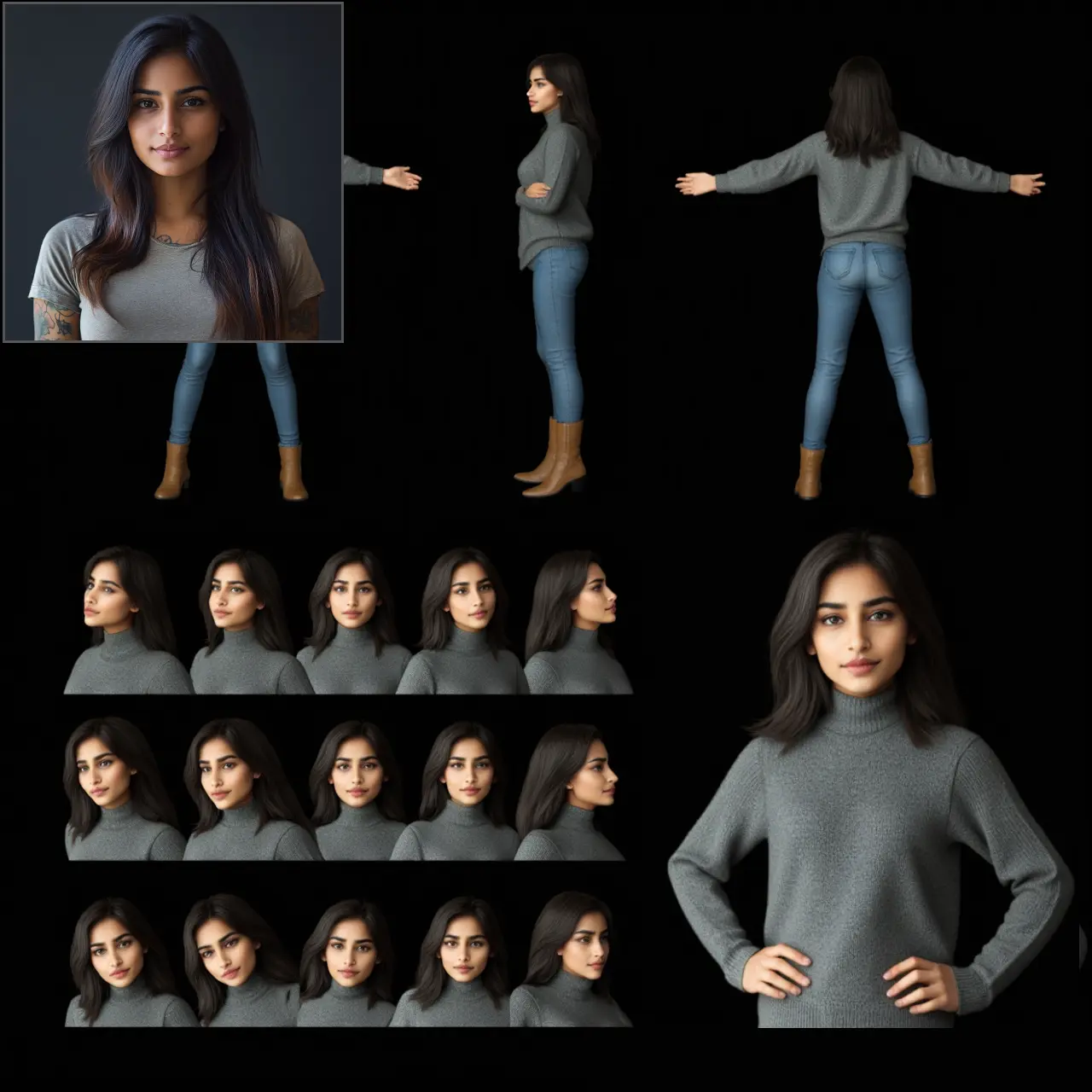ComfyUI Node: CLIP Vector Sculptor text encode
CLIP Vector Sculptor text encode
Categoryconditioning
Extraltodeus (Account age: 3434days) Extension
Vector_Sculptor_ComfyUI Latest Updated
2024-08-28 Github Stars
0.12K
How to Install Vector_Sculptor_ComfyUI
Install this extension via the ComfyUI Manager by searching for Vector_Sculptor_ComfyUI- 1. Click the Manager button in the main menu
- 2. Select Custom Nodes Manager button
- 3. Enter Vector_Sculptor_ComfyUI in the search bar
Visit ComfyUI Online for ready-to-use ComfyUI environment
- Free trial available
- 16GB VRAM to 80GB VRAM GPU machines
- 400+ preloaded models/nodes
- Freedom to upload custom models/nodes
- 200+ ready-to-run workflows
- 100% private workspace with up to 200GB storage
- Dedicated Support
CLIP Vector Sculptor text encode Description
Enhance AI art conditioning by sculpting text embeddings for precise artistic control.
CLIP Vector Sculptor text encode:
The CLIP Vector Sculptor text encode node is designed to enhance the conditioning process in AI art generation by manipulating the text embeddings produced by the CLIP model. This node allows you to sculpt the vector representations of text inputs, providing more control over how the text influences the generated art. By adjusting the intensity, method, and normalization of the sculpting process, you can fine-tune the conditioning to achieve desired artistic effects. This node is particularly useful for artists looking to experiment with different text conditioning techniques to create unique and expressive AI-generated artworks.
CLIP Vector Sculptor text encode Input Parameters:
clip
This parameter represents the CLIP model used for encoding the text. The CLIP model is responsible for converting the text input into vector embeddings that can be manipulated by the sculptor.
text
This is the text input that you want to encode and manipulate. It can be a single line or multiline string, allowing for complex and detailed descriptions. The text input serves as the basis for generating the initial vector embeddings.
sculptor_intensity
This parameter controls the intensity of the sculpting process. It is a floating-point value with a default of 1, a minimum of 0, and a maximum of 10, adjustable in steps of 0.01. Higher values result in more pronounced modifications to the text embeddings, while lower values result in subtler changes.
sculptor_method
This parameter determines the method used for sculpting the text embeddings. The available options are "forward", "backward", "maximum_absolute", and "add_minimum_absolute". Each method applies a different technique to modify the embeddings, affecting the final conditioning in unique ways.
token_normalization
This parameter specifies the normalization technique applied to the token embeddings. The available options are "none", "mean", "set at 1", "default * attention", "mean * attention", "set at attention", and "mean of all tokens". Normalization helps in controlling the magnitude and distribution of the embeddings, ensuring consistent and predictable results.
CLIP Vector Sculptor text encode Output Parameters:
Conditioning
This output contains the conditioned embeddings generated by the CLIP model after applying the sculpting process. These embeddings are used to influence the AI art generation process, guiding the model to produce images that align with the sculpted text input.
Parameters_as_string
This output provides a string representation of the parameters used in the sculpting process. It includes the intensity, method, and normalization settings, allowing you to keep track of the configuration used for each conditioning. If the sculptor intensity is set to 0 and token normalization is "none", this output will indicate that the sculpting is disabled.
CLIP Vector Sculptor text encode Usage Tips:
- Experiment with different sculptor methods to see how each one affects the generated art. Each method offers a unique way of modifying the text embeddings.
- Adjust the sculptor intensity to control the strength of the modifications. Start with lower values for subtle changes and increase the intensity for more dramatic effects.
- Use token normalization to ensure consistent results, especially when working with complex or lengthy text inputs. Different normalization techniques can help in achieving the desired balance in the embeddings.
CLIP Vector Sculptor text encode Common Errors and Solutions:
"Invalid CLIP model"
- Explanation: This error occurs when the provided CLIP model is not recognized or is incompatible with the node.
- Solution: Ensure that you are using a valid and supported CLIP model. Check the model's compatibility with the node and try again.
"Text input is empty"
- Explanation: This error occurs when the text input is left empty or is not provided.
- Solution: Provide a valid text input to be encoded and sculpted. Ensure that the text field is not empty before executing the node.
"Invalid sculptor intensity value"
- Explanation: This error occurs when the sculptor intensity value is outside the allowed range.
- Solution: Ensure that the sculptor intensity is set within the range of 0 to 10. Adjust the value accordingly and try again.
"Unsupported token normalization method"
- Explanation: This error occurs when an unsupported token normalization method is selected.
- Solution: Choose a valid token normalization method from the available options. Verify the selected method and try again.
CLIP Vector Sculptor text encode Related Nodes
RunComfy is the premier ComfyUI platform, offering ComfyUI online environment and services, along with ComfyUI workflows featuring stunning visuals. RunComfy also provides AI Playground, enabling artists to harness the latest AI tools to create incredible art.


